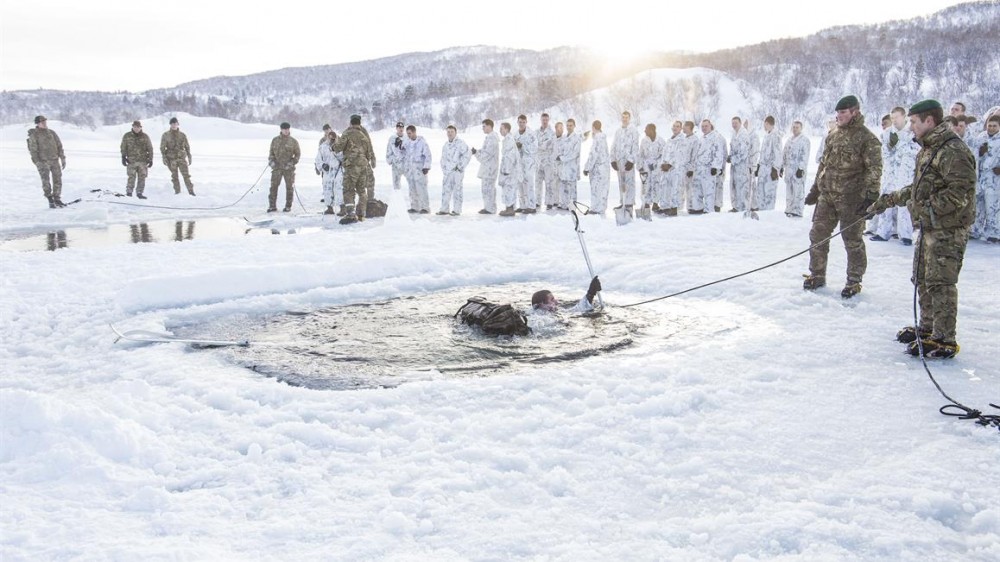In Kurt Vonnegut’s classic Cat’s Cradle, physicist Felix Hoenikker creates something called ice-nine to “solve the problem of mud” – ice-nine makes water change its chemical structure and freeze into solid form. (Pursuing answers about it the protagonist is told “I suppose you’re going to rush to market with a sensational story about ice-nine now…”) Inevitably, it is introduced to the ocean, freezing it and all of the planet’s freshwater.
As Oscar Wilde knew, life has been known to imitate art, or at least attempt to do so. The news that Pentagon research organisation DARPA has launched a programme called ICE which aims to discover novel ice control technologies and exploit “natural biological adaptations to control ice crystals in extreme cold environments” should come as little surprise as a result – it even wants help creating [pdf] “Ice Inducers: Ice nucleators [that] can promote freezing and ice strengthening at elevated temperature”; handy in an otherwise melting world.
See also: Brain chips will become “more common than pacemakers”
The DARPA ICE programme launched August 15, 2022 and is soliciting interest in the research project until November 8, 2022. DARPA says: “The goal of the ICE program is to deliver novel biologically sourced or inspired molecules that can control or exploit ice crystallization. In Phases I and II, the program seeks to discover and/or improve known molecules with enhanced activity corresponding to three broad functional classes of ice control: inhibition of crystallization/re-crystallization, ice nucleation, and molecular adhesion to ice.”
Participants will need to have completed screening for up to 1000 candidate molecules in the first 12 months. All studies will need to use freshwater columnar ice and, potentially, saline spray ice.
“... Asymmetric tactical advantage afforded by novel disruptive technologies are tenants of DOD policy,” said ICE programme manager Anne Cheever in a late August 2022 press release, adding: “The ability to control and modulate the properties of ice crystals will provide novel capabilities, actionable solutions, and strategic advantage for cold weather operations” – arguably ironically, DARPA is launching ICE because of global warming. As it notes: “The warming of the arctic has resulted in an expanded and evolving operational area where the U.S. military must counter peer adversaries, despite prolonged extremely cold temperatures”.
DARPA ICE program: What's the plan?

As DARPA’s Biological Technologies Office puts it in a 55-page brief: “Proposers may seek to leverage a series of technological advances across disparate fields that have produced a confluence of biotechnology capabilities enabling the identification, engineering, optimization, and scaling of new biologically sourced or inspired molecules displaying ice control properties, including: ice-binding proteins (fish, insects, fungi, bacteria, and plants), capable of modulating the physical and kinetic properties of ice formation in a dynamic fashion at the molecular level; pigments capable of absorption of defined wavelengths of light and radiative heat transfer to selectively melt snow versus ice (algae and bacteria); cryoprotective polysaccharides (bacteria, algae, insects, and plants); and small molecule cryoprotectants and eutectic mixtures (animals, insects, and plants).”
Many of the aspired-for “ice control capabilities” are banal, like anti-frostbite gels: “Biological molecules that prevent the formation or growth of ice crystals could potentially be leveraged as an anti-frostbite countermeasure… The addition of biological molecules that could lower the freezing and/or melting points of
these critical solutions in a non-toxic manner would be highly desirable” DARPA notes wistfully.
Others are more defiantly Vonnegutian and ice-nine-flavoured, with DARPA hoping for ice-forming molecules that could be used for: “Solving transportation and logistics challenges (ice bridges, roads, runways).”
The DARPA ICE project is anticipated to be a three-phase program. Phase I will be 18 months, and Phase II will be a 12-month option, for a total of 30 months of discovery, screening, and optimisation. The Pentagon does not say how much funding will be available, with DARPA saying simply that "Multiple awards are possible. The amount of resources made available... will depend on the quality of the proposals received and the availability of funds."







